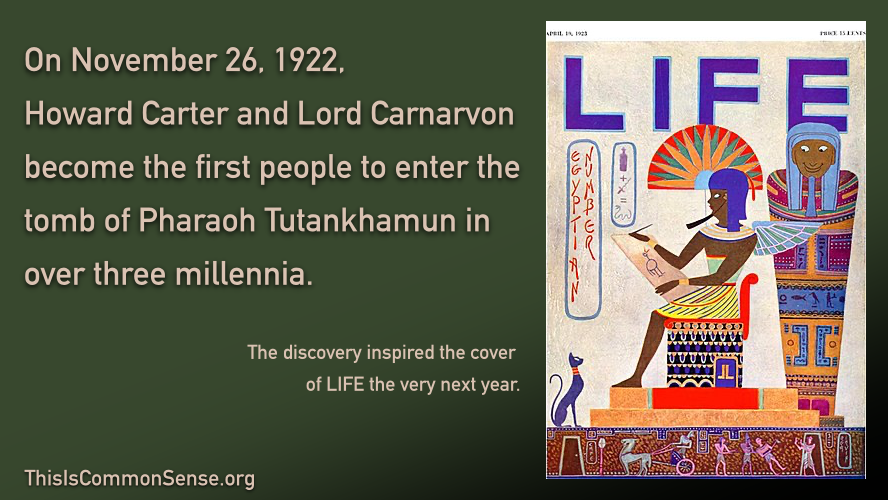On November 26, 1922, Howard Carter and Lord Carnarvon become the first people to enter the tomb of Pharaoh Tutankhamun in over 3,000 years.
King Tut, as he is now popularly known, started life as “Tutankhaten.” The future pharaoh’s name references the 18th Dynasty conception of a deity as represented in the sun disk, the monotheistic worship of which was the point of the Atenism of Akhenaten (Amenhotep IV), who reigned when he was a boy. During the reign of Tut, the religious revolution instigated by Akhenaten was overthrown, and the Amenist cult and its priesthood restored to preëminence. Thus the name change referencing another conception of a sun god, Amun.
Tutankhamun (c. 1341 BC – c. 1323 BC) died before age 20 and his burial appears to have been hastily made in the Valley of the Kings. He was succeeded by Ay, and then a general, Horemheb, who tried to erase from the records the “Amarna Period” pharaohs and any mention of the Atenist monotheistic revolution associated with pharaohs Akhenaten, Smenkhkare, Tutankhamun, and Ay. The tomb designated KV62 had been left intact, its grave good astounding the world, hence the April 19, 1923, issue of Life, reproduced in the image above.

1 reply on “Tut Tut”
Time, Inc, bought Life in 1936, and made such significant changes that one may well regard the later Life as a distinct magazine.